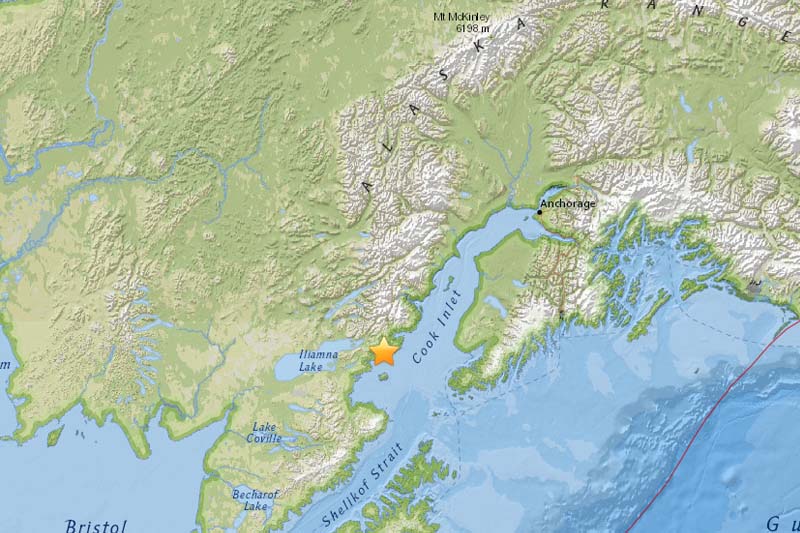Major earthquake hits south Alaska, tremors felt in Anchorage
A major earthquake hit southern Alaska early on Sunday, the US Geological Survey said, setting off tremors felt more than 170 miles (280 km) away in the state's biggest city Anchorage.Twitter users reported feeling shaking, but there were no immediate reports of casualties in the region. "Long and pretty strong earthquake and power out in West Anchorage," wrote David Hulen.
The magnitude 7.3 quake struck 30 miles east-southeast of Pedro Bay, on the shore of Iliamna Lake, the USGS added. It was recorded at a depth of 124.8 km at 1030 GMT.
The Pacific Tsunami Warning Center said it was not anticipating a destructive tsunami and that there was no threat to Hawaii from the quake.
UPDATE
No injuries were reported, but several neighborhoods in the town of Kenai - roughly halfway between the quake's centre and Anchorage - were temporarily evacuated after a gas explosion damaged four homes several hours later, a city spokesman said.
As of Sunday night, local utility company Enstar was still investigating whether the earthquake triggered a gas leak believed to have caused the blast, company spokesman John Sims said.
There were also reports of brief power outages in Anchorage, about 160 miles (257 km) southwest of the epicentre, and cities immediately to the north and south.
The quake, initially reported at a 7.3 magnitude, struck at 1:30 am about 30 miles (48 km) east-southeast of Pedro Bay on the shore of Iliamna Lake, at the foot of a mountain chain just west of Cook Inlet, the US Geological Survey (USGS) reported.
The quake was felt as far away as Whitehorse, the capital of Canada's Yukon Territory more than 600 miles (966 km) west of Anchorage, according to the USGS.
It was recorded 79 miles (128 km) beneath the surface, a depth that helped keep damage to a minimum, said Dara Merz, a research technician with the Alaska Earthquake Centre in Fairbanks.
"If you take into account how deep it was, that's a lot of earth and rock that seismic waves have to work through to get to the surface," Merz said.
The Fairbanks agency reported a series of aftershocks reaching magnitudes of up to 4.7, though Merz said even larger tremors could follow.
Alaska, a seismically active state, records anywhere from 80 to 100 quakes daily, most of them hardly ever noticed. One of the more powerful quakes to hit Alaska in recent years was a 7.9 magnitude temblor that struck beneath the ocean floor near the Aleutian Islands chain in June 2014, but it caused no injuries or major damage.
Following Sunday's quake, jittery Anchorage residents and hotel guests who briefly fled their buildings took to social media sites to share their experiences. Some posted photos of stores with aisles littered by fallen merchandise knocked off shelves to the floor.
The quake produced no tsunami threat, according to the US Pacific Tsunami Warning Centre.






